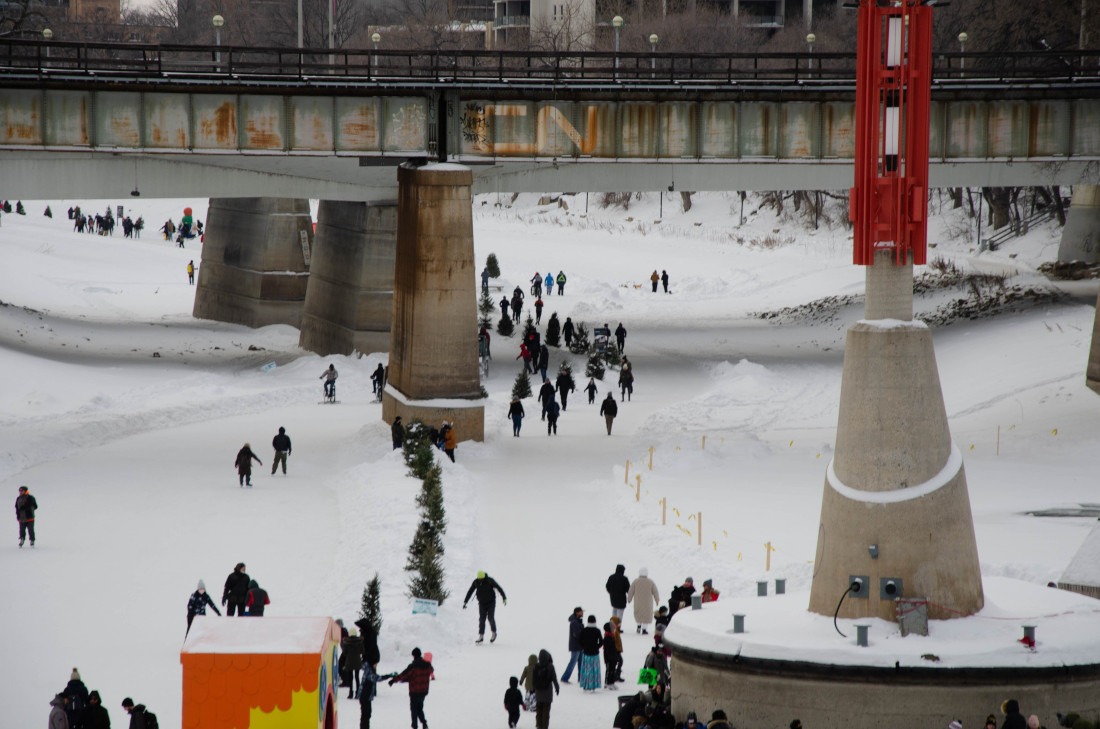Critipeg: Typical Toewsian tropes
The Way She Closed the Door Miriam Toews The New Yorker, Feb. 7, 2022
It’s fitting that a narrative about walking along the Red and Assiniboine Rivers would be published in early February, when the frozen river trail is abuzz with patrons. It is, after all, one of the most brag-worthy facts about Winnipeg, unimaginable to audiences from just about any other climate – which happens to be a young Parisian man in The Way She Closed the Door.
The essay by Miriam Toews begins with a conversation Toews had with Luc, the young man, in a café in Paris. Looking back on this memory, Toews realizes she failed to describe Winnipeg adequately, focusing on the extreme cold. She reimagines the conversation, reflecting on her ties to the city and her relationship with her mother.
Toews tells Luc about a couple winters ago when she was caring for her mother while they visited family in Winnipeg. She describes nighttime walks on the river that gave her time to reflect on motherhood and her relationship with her aging mother.
Unsurprisingly, the tale is teeming with typical Toewsian tropes: dialogue blending with narrative, long-gone fathers, the mother-daughter relationship and, of course, the eclectic mother herself.
There’s a certain melancholy in the way aging is woven into the essay. Toews talks about taking care of her mother, her son being grown up and her joy and fatigue in taking care of her granddaughter.
This weariness permeates the piece, carrying over to the topic of writing. Toews talks about the impossibility of retiring from her writing, describing the fingers in her mind typing compulsively since she was young in a way that makes it sound exhausting. She is both simultaneously embarrassed to be a writer and ashamed to not have been a good mother. Walking along the river is both respite and penance, a quiet in-between world apart from the city streets where she can rest and reflect.
Photo by Keeley Braunstein-Black
Toews describes a disenchanting encounter with an old lover on the river trail. She seems homesick – not for the city itself, but for a different time. She eventually leaves the conversation to keep walking, keep moving forward, both physically and emotionally.
When Toews climbs back up the riverbank to reality, she begins to frantically name-drop streets, landmarks and neighbourhoods with the ease of someone talking to a friend who’s also familiar with the area.
Toews names so many locations along her path that it would be easy to map out her trip. There’s something both exciting and comforting in recognizing street names, businesses and neighbourhoods in the pages of a magazine that must surely regard Winnipeg as ignominious – but maybe that’s just True Winnipeg: the excitement of being recognized, being given value, by a larger and more important outside world, and the feeling of always being one step away from something familiar.
In a scene near the end of the essay, Toews overlooks the frozen river, facing out toward the Legislative Building and the Golden Boy, as iconic as the river path. The river suddenly starts to crack, and the city is divided again, no longer connected by this ephemeral pathway. The loss and change are overwhelming, which is maybe what’s so tiring, after all.
Published in Volume 76, Number 22 of The Uniter (March 23, 2022)







